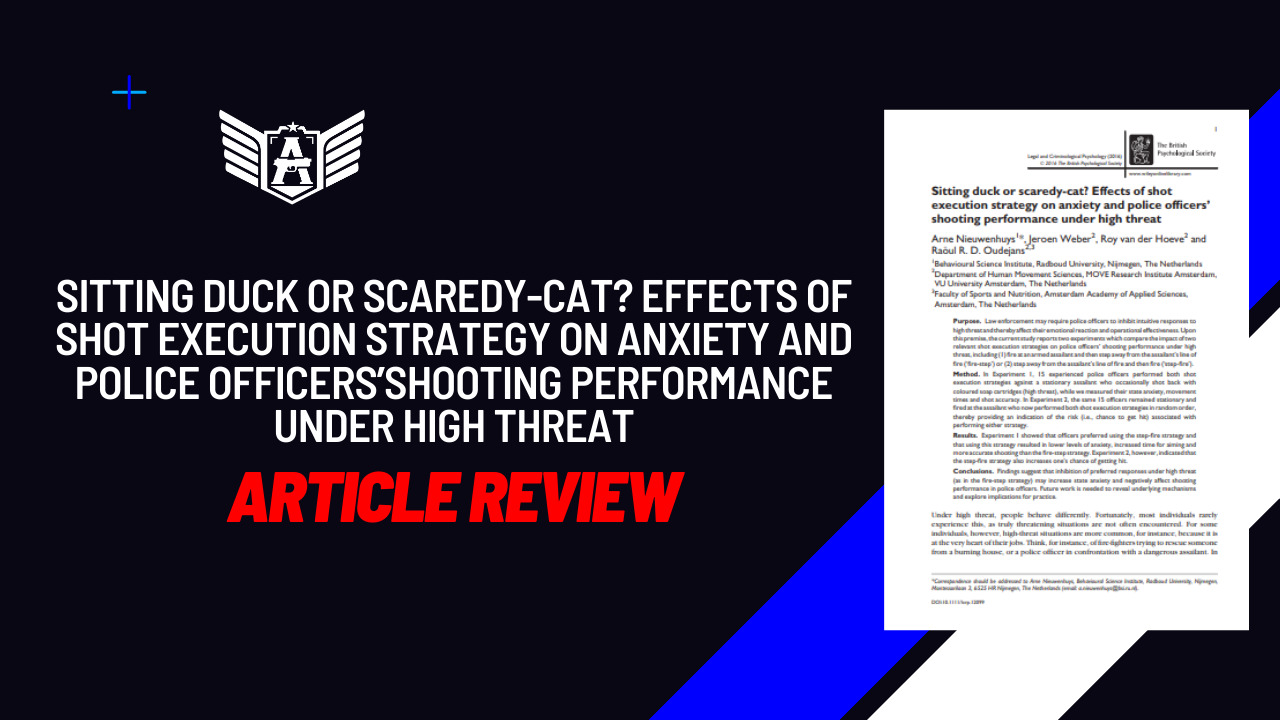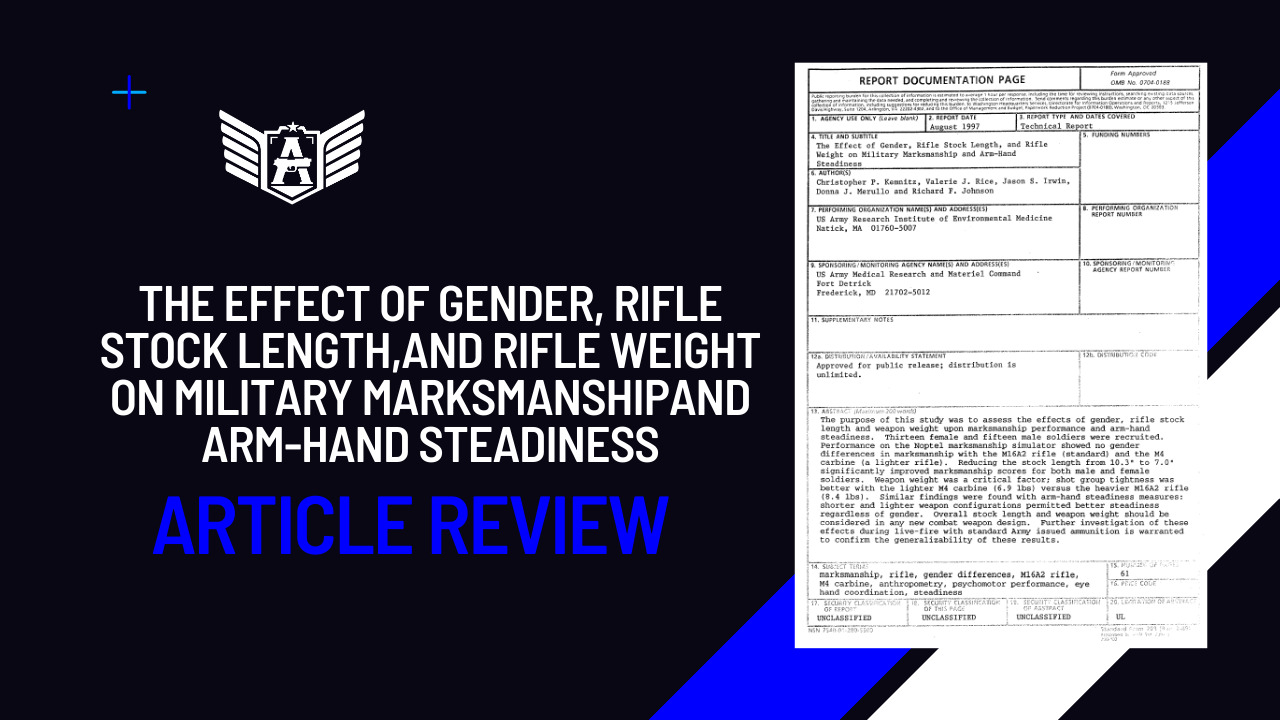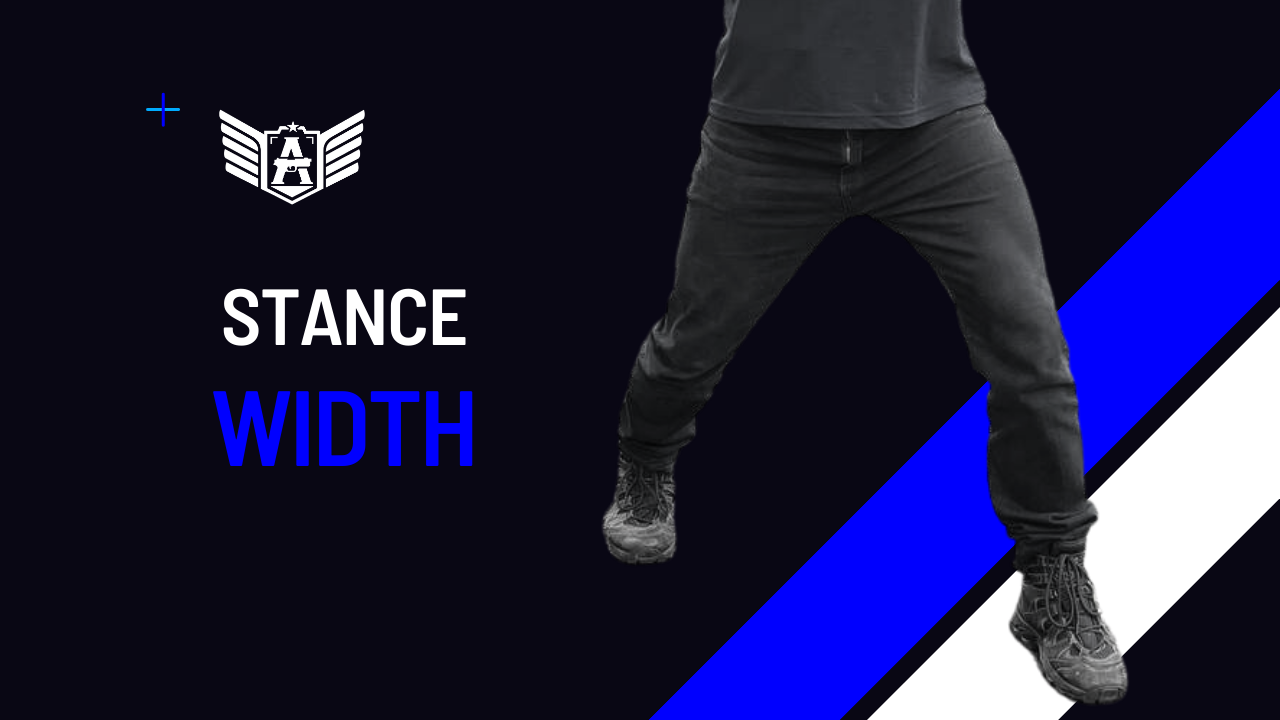The study titled “Sitting duck or scaredy-cat? Effects of shot execution strategy on anxiety and police officers’ shooting performance under high threat” investigates the impact of shot execution strategy on anxiety levels and shooting performance among police officers in high-threat situations. Conducted by Arne Nieuwenhuys, Jeroen Weber, Roy van der Hoeve, and Raoul R. D. Oudejans, the research, based at the Behavioural Science Institute of Radboud University in Nijmegen, The Netherlands, and the Department of Human Movement Sciences at VU University Amsterdam, explores how different approaches to handling a threatening situation influence officers’ anxiety and their ability to perform effectively in shooting scenarios. The study, affiliated with the Faculty of Sports and Nutrition at Amsterdam Academy of Applied Sciences, sheds light on the psychological and performance aspects of law enforcement officers facing high-stress situations.
In high-threat situations, individuals exhibit different behaviors influenced by strong emotions such as fear and anxiety. For professionals like firefighters or police officers facing danger regularly, successful performance is crucial, and behavioral changes due to threat can have serious consequences. Emotions like fear and anxiety typically trigger automatic motivational orientations that facilitate specific behavioral responses, such as alertness and immediate reaction to threats. However, certain performance situations may require individuals to override these initial responses and focus on goal-directed actions. For instance, a police officer in a confrontation must concentrate on accuracy despite the urge to run or seek cover. The study explores how task execution strategies that require overriding initial responses to threat might be more challenging and potentially lead to poorer performance compared to strategies accommodating these responses. This investigation, led by Arne Nieuwenhuys and his colleagues, aims to shed light on the shot execution strategies adopted by police officers in the face of armed assailants and their impact on performance.
The study addresses the increasing frequency of police officers confronting armed assailants and the subsequent need for effective responses while upholding the public’s scrutiny on the use of force. In the Netherlands, where the research took place, officers are trained in two shot execution strategies: step-fire and fire-step. Both involve similar movements but differ in the order of execution. Initial data from Dutch officers suggest comparable shooting performance under low-threat conditions. However, the study aims to investigate how these strategies impact officers’ shooting performance, state anxiety, and safety under high-threat conditions. Experiment 1 focuses on shot accuracy and anxiety, while Experiment 2 explores the impact on officers’ safety. The study aims to provide theoretical insights into the influence of behavioral responses on emotional experiences and performance under high threat, offering practical implications for the effectiveness of these strategies in real-life threatening situations.

Experiment 1 Overview: Experiment 1 examined the impact of shot execution strategy (step-fire vs. fire-step) on state anxiety and shot accuracy during a high-threat shooting task involving police officers. Participants engaged in scenarios where they aimed to hit a stationary assailant firing back with colored soap cartridges, inducing a sense of threat and anxiety. The order of officers’ behavioral responses was manipulated while maintaining a constant threat level. The study aimed to understand how different strategies aligned with or conflicted with officers’ intuitive responses under high threat, influencing anxiety levels and shooting performance.
Method: Fifteen police officers participated, and both shot execution strategies were randomly assigned across 40 trials. Strategies involved stepping aside before firing (step-fire) or firing first before stepping aside (fire-step). Participants reported their preference after the experiment. State anxiety was assessed using a visual analogue scale, and shot accuracy, as well as execution times for drawing, firing, and stepping, were measured.
Dependent Variables:
- Preference: Participants indicated their preferred strategy: step-fire, fire-step, or no difference.
- State Anxiety: Measured using a visual analogue scale after each strategy execution.
- Shot Accuracy: Percentage of trials where participants hit the assailant’s chest target.
- Shot Execution: Timing of drawing, firing, and shot duration.
- Step Execution: Timing and duration of the stepping movement.
Statistical Analysis: Differences between step-fire and fire-step conditions were analyzed using paired sample t-tests. Shot completion times between participants and the assailant were compared using independent sample t-tests. Significance was set at p = .05, and effect sizes (Cohen’s d) were reported.
In Experiment 1, participants overwhelmingly preferred the step-fire (SF) strategy (80%), while none favored the fire-step (FS) strategy. Correspondingly, they reported significantly lower anxiety levels during SF execution compared to FS (t(14) = 2.19, p = .046, d = 0.51). Additionally, participants demonstrated notably better shot accuracy in the SF condition (t(14) = 2.32, p = .036, d = 0.42). Movement execution times aligned with the instructed strategies, showing significantly earlier step initiation and completion in SF than in FS conditions (t(14) = 5.95, p < .001, d = 1.58; t(14) = 6.17, p < .001, d = 1.68, respectively). Conversely, shot initiation and completion times were significantly earlier in the FS condition (t(12) = 3.92, p = .002, d = 1.19; t(14) = 4.38, p = .001, d = 1.17, respectively). Shot and step execution times often overlapped, with participants initiating the second movement before completing the first.
Discussion: Experiment 1 revealed that officers’ behavioral responses to threat, as reflected in shot execution strategies, significantly influenced emotional responses and shooting performance. The SF strategy, preferred by most officers, correlated with lower anxiety and better shot accuracy. The observed simultaneous execution of firing and stepping movements may explain the relatively lower shot accuracy. Shot execution times were faster in the FS condition, possibly indicating an attempt to minimize the risk of getting hit. Overall, the findings suggest that, under high-threat conditions, police officers should consider the step-fire strategy for improved performance. However, the impact on officer safety and the chance of getting hit required further investigation, leading to Experiment 2.

Experiment 2: Experiment 2 aimed to assess if the order of movements in step-fire (SF) and fire-step (FS) shot execution strategies impacts police officers’ likelihood of getting hit. Participants remained stationary, shooting at an assailant executing both strategies randomly. Shot accuracy served as an indicator of the relative risk associated with each strategy.
Method: The experiment involved the same 15 police officers from Experiment 1. The procedure mirrored Experiment 1, with participants now stationary while the assailant employed both strategies in random order. Ethical approval and safety protocols were maintained.
Results: Participants reported lower anxiety levels on average in the SF condition compared to FS, though the difference was not statistically significant (t(14) = 1.80, p = .093, d = 0.50). While shot initiation times showed no significant difference, shot completion times were significantly later (t(14) = 2.98, p = .01, d = 0.77), and shot durations were significantly longer (t(12) = 2.21, p = .047, d = 0.30) in SF than in FS. Notably, shot accuracy was significantly better in the SF condition (t(14) = 2.267, p = .040, d = 0.47). Participants tended to complete their shot earlier than the assailant in SF but later than the assailant in FS.
Discussion:
Experiment 2 aimed to assess the impact of executing step-fire and fire-step shot strategies on police officers’ likelihood of getting hit. In a stationary scenario, officers shot at an assailant using both strategies randomly. The results showed significantly better shot accuracy in the step-fire condition, indicating a greater risk associated with this strategy. Analysis of shot completion times revealed that officers in the step-fire condition were more accurate and faster than the assailant, while the opposite was true for the fire-step strategy.
The observed differences in shot accuracy were not attributed to the complexity of shooting at a moving target, as both conditions involved firing at the assailant during the stepping movement. Shot durations were longer in the step-fire condition, suggesting that officers took more time to aim, potentially contributing to superior accuracy. Lower self-reported anxiety in the step-fire condition may have further supported better shot accuracy.
Experiment 2 demonstrated that a shot execution strategy allowing more time for response was associated with improved shot accuracy, likely due to reduced anxiety and extended aiming time. However, from an applied perspective, the findings suggested that, for police officers, adopting such a strategy might compromise safety by increasing the risk of being hit.
General Discussion:
In summary, both experiments explored the impact of different shot execution strategies (step-fire vs. fire-step) on police officers’ shooting performance under high threat. Experiment 1 focused on state anxiety and shot accuracy, while Experiment 2 investigated the impact on officers’ safety, measured by the likelihood of getting hit.
The findings revealed a complex relationship between the order of behavioral responses, emotional experience, and performance under high threat. While the preferred step-fire strategy showed superior shot accuracy, it also increased the risk of being hit. The study emphasized the importance of aligning operational procedures with intuitive responses to high threat but acknowledged the context-dependent nature of optimal strategies in real-life situations.
Despite limitations, including the absence of high- and low-threat conditions and controlled experimental variations, the study provided robust insights. Further research is needed to explore underlying mechanisms and practical implications for varying conditions.
Nieuwenhuys, A., Weber, J., van der Hoeve, R., & Oudejans, R. R. D. (2016). Sitting duck or scaredy-cat? Effects of shot execution strategy on anxiety and police officers’ shooting performance under high threat. Legal and Criminological Psychology, 22(2), 274–287. doi:10.1111/lcrp.12099




